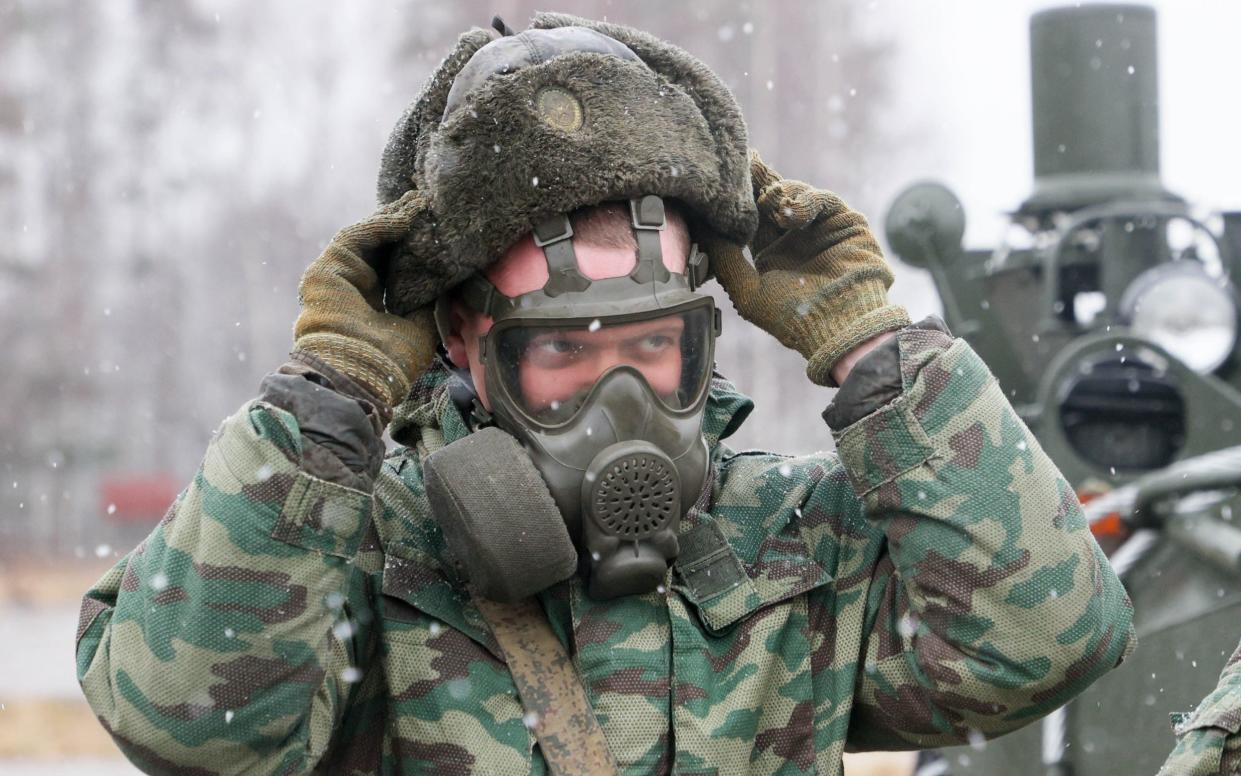Putin has deployed chemical weapons. We need gas masks now

- Oops!Something went wrong.Please try again later.
The news that Britain intends to up its defence spending in this period of unprecedented danger is welcome and necessary, not least because it signals to our Western partners that we are still a major player in Europe’s defence at a time when other nations – including France and Germany – have not delivered the practical or even moral leadership many hoped for amid the Continent’s bloodiest war since the 1940s.
I do find myself troubled, however. 2.5% by 2030 sends an important message, yes, but is it enough given the seriousness of the danger? 2030 is six years away, and it has only taken two for the Russians to sow chaos and terrible suffering on the Continent.
Then there is the very nature of the Russian war machine itself, which seems to be taking on an ever more horrific character the longer this war is allowed to continue. As recently revealed in the Telegraph, chemical warfare is now being actively deployed by Russian forces to attack Ukrainian defensive positions: a war crime.
Things are so serious the Ukraine Government has sent a report to the United Nations and the Organisation for the Prohibition of Chemical Weapons (OPCW) in the Hague detailing the use of toxic chemicals on their troops. According to them, it is widespread, occurring over 1000 times during the war, with increasing intensity and frequency in recent weeks.
There is a method in the madness of these attacks, suggesting these are not the actions of individual Russian junior commanders but a coordinated operation. We know from Russian chemical warfare doctrine that their use is controlled from the very highest level. The doctrine the troops are following is systemic: first firing conventional weapons to get troops sheltering deep in the trench system, then fire the CS gas or chemical weapons to catch troops at the bottom of their trenches, and third to fire conventional weapons to catch troops in the open trying to avoid the gas. This third phase also includes an armoured advance to take trenches vacated in the melee, which we have seen recently near Avdiivka.
According to interviews with multiple Ukrainian soldiers, Russian chemical weapon attacks are typically carried out by drones dropping grenades directly into Ukrainian fighting positions. The attacks are designed to force Ukrainian defenders to flee their heavily dug-in positions, after which they will then be attacked by more drones dropping conventional munitions, artillery, or small arms fire.
This is straight out of the Russian playbook from Syria, albeit in a more modern form. I saw for myself there how devastating basic toxic chemicals can be on an unprotected population. Syria and Russia attacked the city of Aleppo for 4 years conventionally with no success, but after 17 days of dropping chlorine-filled barrel bombs in December 2016, the siege was broken and 400,000 people surrendered to the dual tyranny of Assad and Putin. The gas, heavier than air, seeped underground, killing people there or forcing them into the open.
If this sounds reminiscent of a far more terrible era of warfare, then you are correct. Many Ukrainian positions are trenches reminiscent of those from the First World War. As in that horrific conflict, gas can be highly impactful on the battlefield for shifting fixed positions. Tragically, it seems that part of the reason the Russian gas attacks have proven effective is that we have not prepared ourselves, and by extension Ukraine, adequately for the return of such weapons. The Ukrainian troops apparently only have very old, poor quality Soviet era gas masks which provide little protection.
It’s for this reason that we should not just be prioritising investing in conventional weapons, as vital though that is, but also preventative measures for chemical weapons. And yes, that includes gas masks, which he should be investing more into and donating to our allies.
As Bob Seely, chair of the All Party Parliamentary Group for Ukraine, put it to me: “The question is, do we have masks in stock that we can supply that will provide protection?” When I put this to Ben Wallace, the former Defence Secretary, he said that “for decades Britain has produced gas masks for many countries. We should be able to lean into this challenge with a significant donation from our own factories”.
It cannot be beyond the capabilities of Britain to get top-quality masks to the frontlines in Ukraine. Nor can it be beyond us to recognise the danger posed by this increasingly violent Russian state, and adapt our strategies accordingly. In that vein, I fear that 2.5% percent of our GDP on defence will not be enough.
Colonel (Retd) Hamish de Bretton-Gordon OBE is a former commander of UK & NATO CBRN Forces

